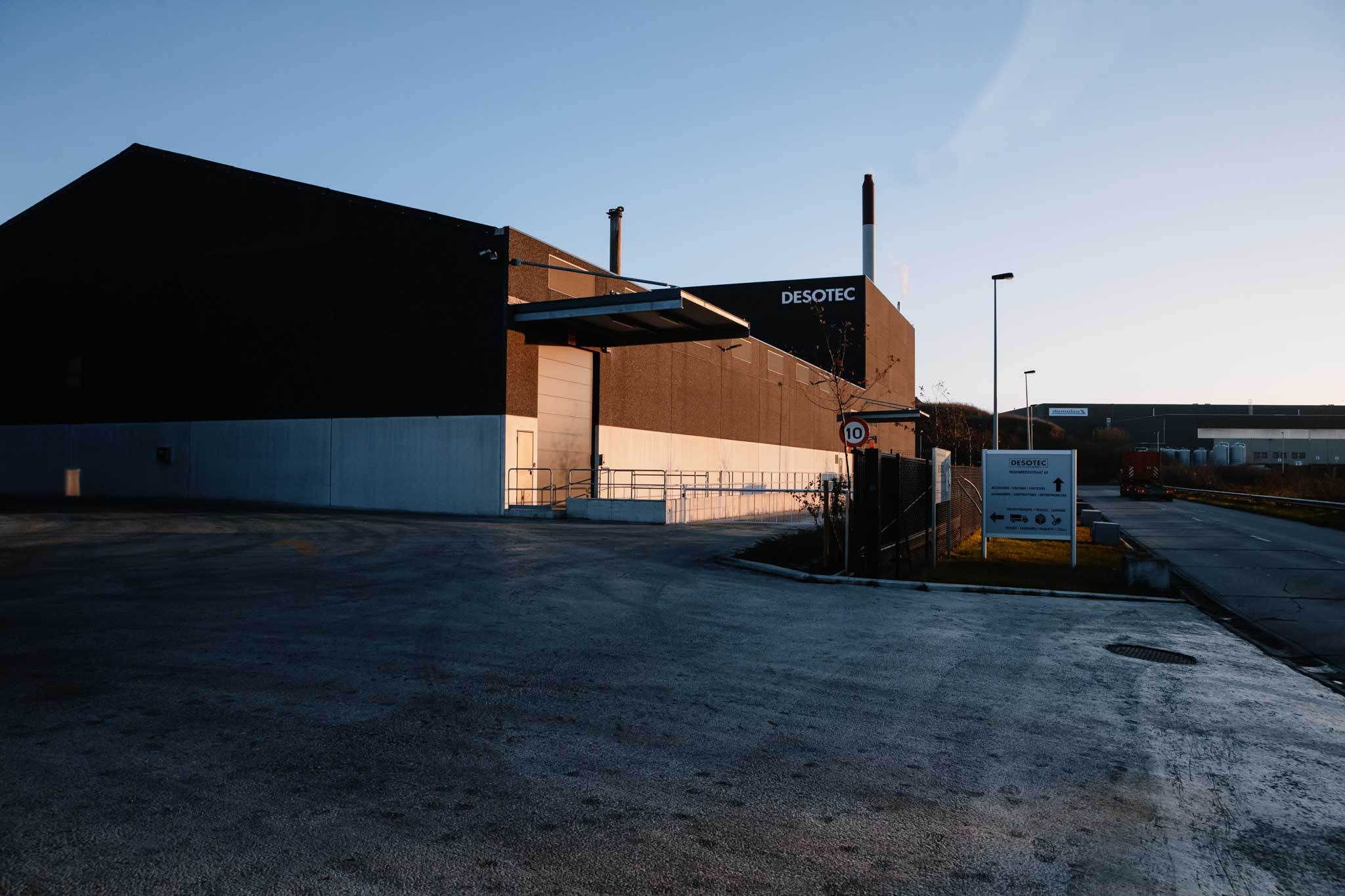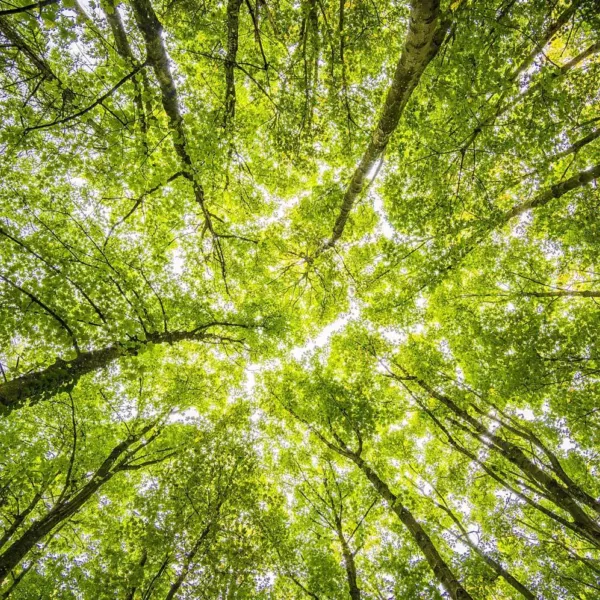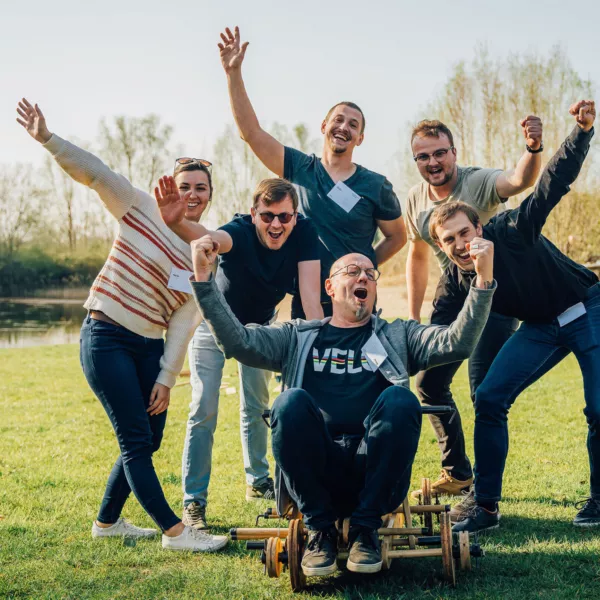Frequently Asked Questions

Want to know more about our work?
Here are some of the most common questions we receive from neighbours, customers and job applicants. We’re always happy to answer any further queries, or book you onto a tour of our facilities.
-
Activated carbon is the product we use in our filters. It may be made from any carbon-rich raw material, including coal, wood, or even nutshells or fruit stones.
To “activate” it, or give it purifying capacity, we heat it at very high temperatures in a special furnace. This is done without oxygen, so it is charred rather than burned. To create pores, steam is introduced – it’s a bit like a sauna!
During filtration, these pores soak up impurities in air and water like a sponge. This process is called adsorption.
After saturation, the carbon is treated in our reactivation furnaces. The impurities are desorbed and completely destroyed, and the carbon is usually reactivated for reuse. This circular process boosts the sustainability of activated carbon, cutting the carbon footprint of both DESOTEC and our customers.
-
Activated carbon is a widespread technology used to achieve stringent purification standards across many industries.
It is used in filters to purify water, liquids, air emissions and gas in many industries including pharma, biogas, manufacturing, and remediation.
It enables these industries and many others to comply with the environmental laws that protect our planet for future generations.
Your own home is also likely to contain activated carbon, in appliances such as water filters and kitchen extraction hoods. It really is a very versatile, proven and harmless filtration method!
-
Health and safety are top priorities to DESOTEC, and we have decades of experience and expertise in keeping our workers and neighbours safe. We ensure that we use activated carbon in a way that presents no risk to health.
Our facilities are fitted with extraction systems to minimise dust. Our staff are trained and equipped to handle activated carbon safely, and are monitored during operations to ensure they remain protected at all times.
Waste carbon is stored carefully, and all emissions from our industrial processes are continuously monitored to ensure that only harmless water vapour is seen exiting the chimney. That means the air, water and soil around our facilities remain clean at all times, presenting no health issues for people living nearby.
-
Once filters are returned from customers to our facilities, they are emptied, checked and cleaned. The waste carbon is sorted.
- Reactivation is how we recycle carbon. It is treated in our furnaces at high temperature, releasing (desorbing) the components that were adsorbed at customers’ sites. Our lab carries out quality controls before the carbon is placed back in other filters for customers.
- Flue gas treatment is how we purify (burn) gases, treat and recover the components desorbed from the reactivation process.
The entire process is continuously monitored, with oversight from the environmental authorities, assuring that all unwanted components are destroyed in this process.
Through our work and our reactivation of carbon, we cut CO₂ emissions equivalent to the amount produced by 80 000 passenger cars per year.
- Reactivation is how we recycle carbon. It is treated in our furnaces at high temperature, releasing (desorbing) the components that were adsorbed at customers’ sites. Our lab carries out quality controls before the carbon is placed back in other filters for customers.
-
We analyse all used carbon to find out what components it has adsorbed, and in what concentrations. If we cannot reactivate it, we send it to specialised waste management centres for safe valorisation.
Most used carbon can be reactivated. The adsorbed components are treated in a two-step process:
- They are destroyed in our furnaces, producing water vapour.
- The residue is neutralised using several techniques, leaving dust and salts. These are collected, and either reused or disposed of.
Before treatment, the waste carbon is stored using relevant safety measures such as airtight containers or thermal cameras. There is zero risk of the components infiltrating the surrounding soil or air.
-
Activated carbon can indeed produce harmless dust. We ensure our staff are always working in hygienic conditions by cleaning our facilities continuously and at every shift change. Of course, we always provide staff with personal protective equipment such as dust masks for certain operations too.
We filter the air that is extracted from our facilities, so emissions contain only harmless water vapour and no dust.
-
What you see coming out of our chimneys is water vapour and air – effectively, clouds!
The water vapour comes from the wet carbon that we reactivate. Furnaces 3 and 4 have extra purification steps, namely wet scrubbers, and release extra water vapour.
There are also tiny amounts of neutralised residues from our reactivation process. Our emissions are kept under continuous monitoring, so we know that the total organic carbon (TOC) is just 0.0003% of the “clouds” you see. This is well below the level that we are permitted to emit by the environmental authorities.
In fact, our work and our reactivation of carbon cuts CO₂ emissions equivalent to the amount produced by 80 000 passenger cars per year.
-
We use certified, calibrated measuring systems that are adjusted, checked and maintained by specialist external companies. We cannot adjust them or edit their values ourselves.
These continuously monitor our emissions, and transmit the data to the authorities. The Flanders (Belgium) regional authorities have set some of the strictest emissions limits in Europe – and on average, we reach just one-fifth of this permitted level.
We have ensured that our emissions are as clean as possible by investing in state-of-the-art technology that is unique in our industry. Plus, as part of our commitment to sustainability, we carry out research and development into new technology and systems to further reduce these levels.
-
The presence of PFAS is everywhere, you can find it even in drinking water. We are well aware of the potential risks of an excessive presence of these molecules.
The safety and the health of our people and local community are an utmost priority at DESOTEC. Our wastewater goes through regular rigorous testing and the results are reassuring. The water we are discharging is still far from reaching the limits of the European drinking water standard for total PFAS!

-
The presence of PFAS is everywhere, you can find it even in drinking water. We are well aware of the potential risks of an excessive presence of these molecules.
The European POP Directive* is a set of rules to limit and control these chemicals. We can affirm our full adherence to this directive. As such, we exclusively reactivate spent carbon when the detected concentration of these PFAS molecules falls below the established and safe limits outlined in this European POP Directive.
Got more questions? Reach out anytime!
*Regulation (EU) 2022/2400 amending Annexes IV and V to Regulation (EU) 2019/1021 : https://echa.europa.eu/pops-le...
-
No! We can assure you that there is no PFAS coming out of our chimney. What you see coming out is water vapour and air – effectively, clouds!
[See the answer on the question ‘What exactly comes out of your chimneys’].
What we emit is closely monitored to ensure we are fully compliant with the current regulations. We went even further and asked Eurofins, a global heavyweight in bio-analytical testing, to thoroughly analyze what is coming out of our chimney. They officially confirmed that there are no PFAS being emitted, as everything is safely destroyed in our reactivation process.


